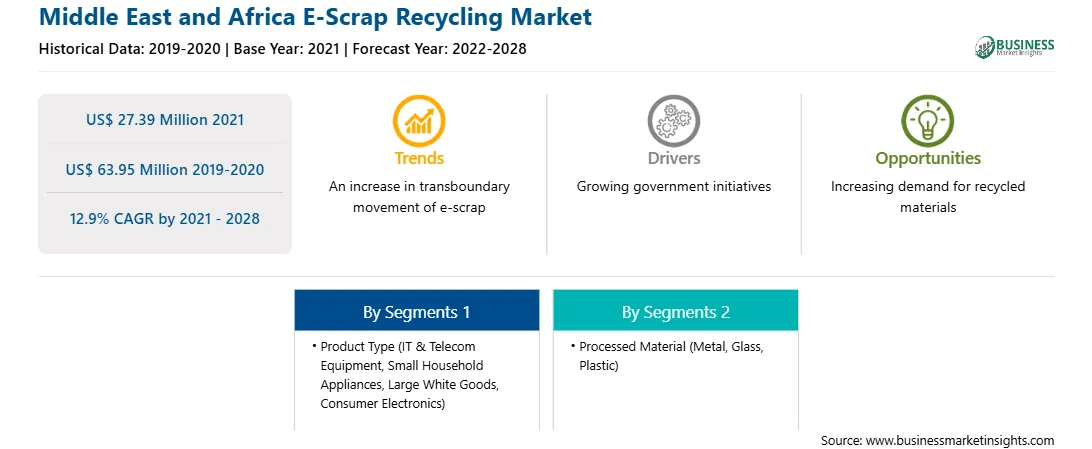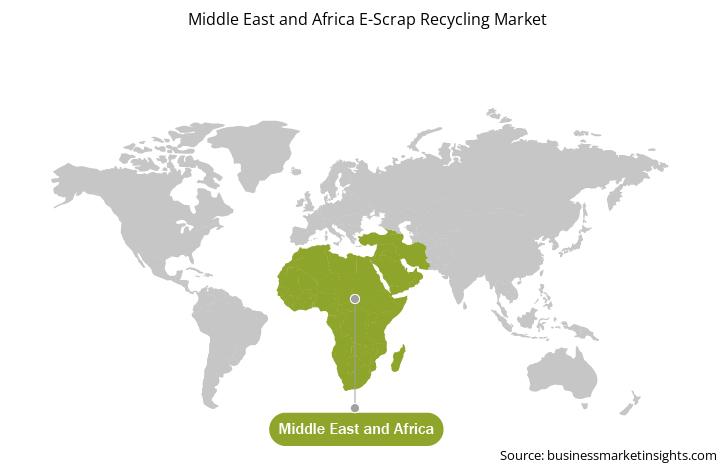Recycling involves separating materials, molecules, or chemical constituents from electronic waste to sell it as a raw material in a suitable form for the creation of new products. To separate the materials, devices and components must be dismantled, sorted, ground, and incinerated, followed by subjecting them to apt chemical treatments. Electronic waste comes in a wide variety of forms and is frequently mixed with other types of waste. As a result, the waste to be processed differs from one electronic device to another. Through sorting, the chemical complexity and unpredictability of the mixture are handled. The process can be performed at the following levels: device (type, generation, etc.), module (printed circuits, batteries, external envelopes, frames, etc.), electronic component (cables, resistances, capacities, chips, bare boards, etc.), or powder. New technology, such as microscopic piping, is currently being employed to improve mineral extraction. The pipe in a microfluidic device is less than a millimeter in diameter. Moreover, the recycling companies can continuously, automatically, and swiftly examine diverse combinations of characteristics by integrating analysis methods (X-rays, infrared, and sensors). This would simplify the recycling process and help them increase the volume of recycling, which would ultimately drive the e-scrap recycling market.
With the new features and technologies, vendors can attract new customers and expand their footprints in emerging markets. This factor is likely to drive the MEA e-scrap recycling market in the coming years. The market is expected to grow at a good CAGR during the forecast period.
The MEA e-scrap recycling market is segmented based on product type, processed material and country. Based on product type, the market is segmented into IT & telecom equipment, small household appliances, large white goods, consumer electronics, and others. The large white goods segment dominated the market in 2020 and consumer electronics segment is expected to be the fastest growing during the forecast period. Based on processed material, the market is segmented into metal, glass, plastic, and others. The metal segment dominated the market in 2020 and is expected to be the fastest growing during the forecast period. Based on country, the MEA e-scrap recycling market is segmented into South Africa and the rest of MEA. DOWA HOLDINGS CO., LTD; Electronic Recyclers International, Inc; JX Nippon Mining & Metals Corporation; Sims Metal Management Ltd; Stena Metall Ab; Tetronics; and Umicore are among the leading companies in the market.
Strategic insights for the Middle East and Africa E-Scrap Recycling provides data-driven analysis of the industry landscape, including current trends, key players, and regional nuances. These insights offer actionable recommendations, enabling readers to differentiate themselves from competitors by identifying untapped segments or developing unique value propositions. Leveraging data analytics, these insights help industry players anticipate the market shifts, whether investors, manufacturers, or other stakeholders. A future-oriented perspective is essential, helping stakeholders anticipate market shifts and position themselves for long-term success in this dynamic region. Ultimately, effective strategic insights empower readers to make informed decisions that drive profitability and achieve their business objectives within the market.

| Report Attribute | Details |
|---|---|
| Market size in 2021 | US$ 27.39 Million |
| Market Size by 2028 | US$ 63.95 Million |
| Global CAGR (2021 - 2028) | 12.9% |
| Historical Data | 2019-2020 |
| Forecast period | 2022-2028 |
| Segments Covered |
By Product Type
|
| Regions and Countries Covered | Middle East and Africa
|
| Market leaders and key company profiles |
The geographic scope of the Middle East and Africa E-Scrap Recycling refers to the specific areas in which a business operates and competes. Understanding local distinctions, such as diverse consumer preferences (e.g., demand for specific plug types or battery backup durations), varying economic conditions, and regulatory environments, is crucial for tailoring strategies to specific markets. Businesses can expand their reach by identifying underserved areas or adapting their offerings to meet local demands. A clear market focus allows for more effective resource allocation, targeted marketing campaigns, and better positioning against local competitors, ultimately driving growth in those targeted areas.

The Middle East and Africa E-Scrap Recycling Market is valued at US$ 27.39 Million in 2021, it is projected to reach US$ 63.95 Million by 2028.
As per our report Middle East and Africa E-Scrap Recycling Market, the market size is valued at US$ 27.39 Million in 2021, projecting it to reach US$ 63.95 Million by 2028. This translates to a CAGR of approximately 12.9% during the forecast period.
The Middle East and Africa E-Scrap Recycling Market report typically cover these key segments-
The historic period, base year, and forecast period can vary slightly depending on the specific market research report. However, for the Middle East and Africa E-Scrap Recycling Market report:
The Middle East and Africa E-Scrap Recycling Market is populated by several key players, each contributing to its growth and innovation. Some of the major players include:
The Middle East and Africa E-Scrap Recycling Market report is valuable for diverse stakeholders, including:
Essentially, anyone involved in or considering involvement in the Middle East and Africa E-Scrap Recycling Market value chain can benefit from the information contained in a comprehensive market report.